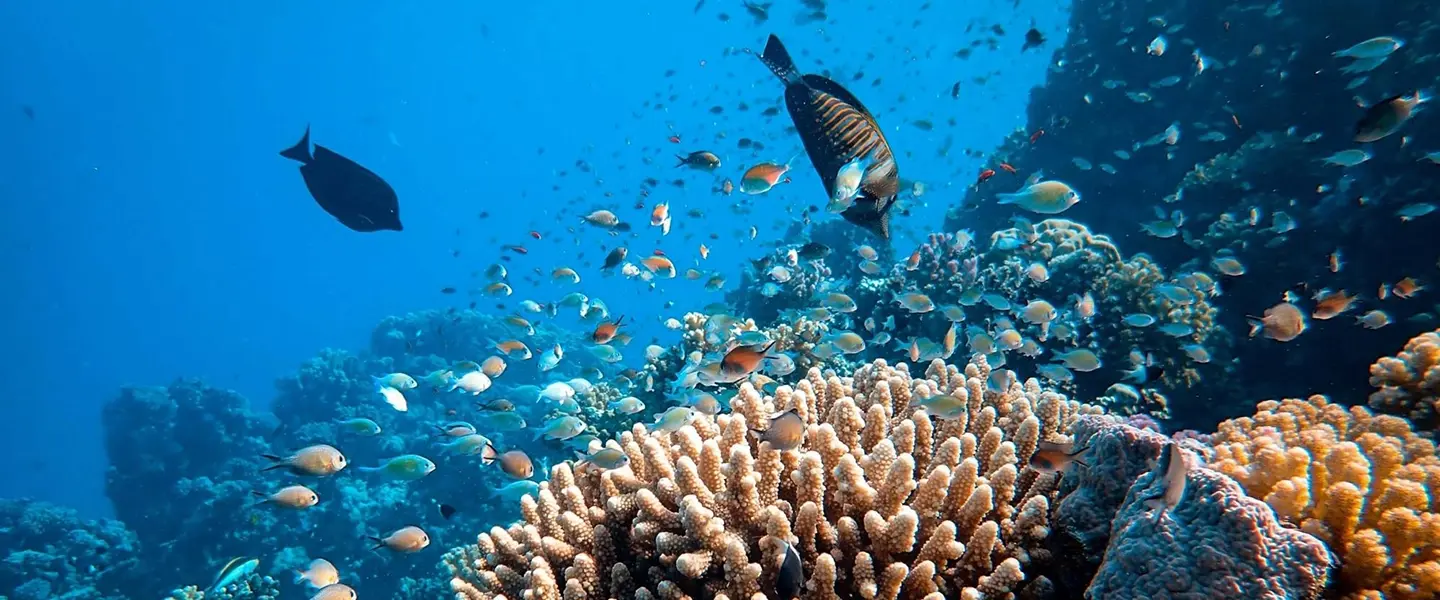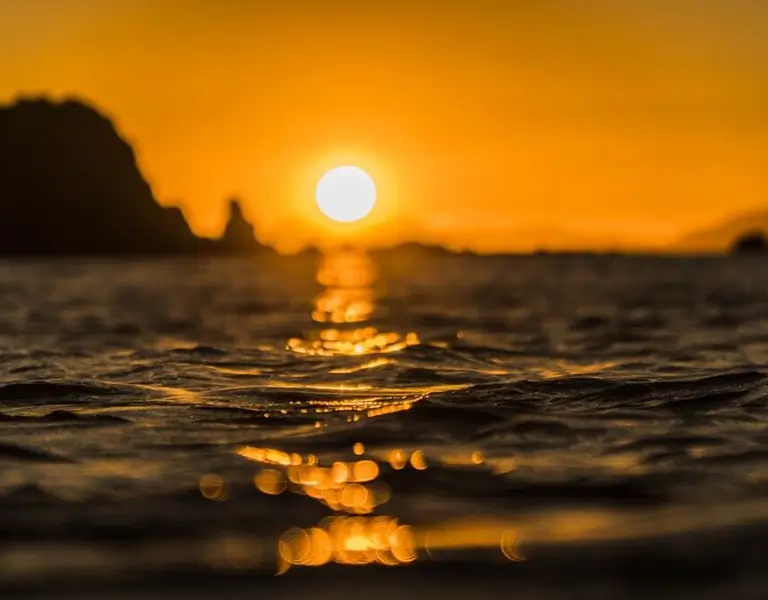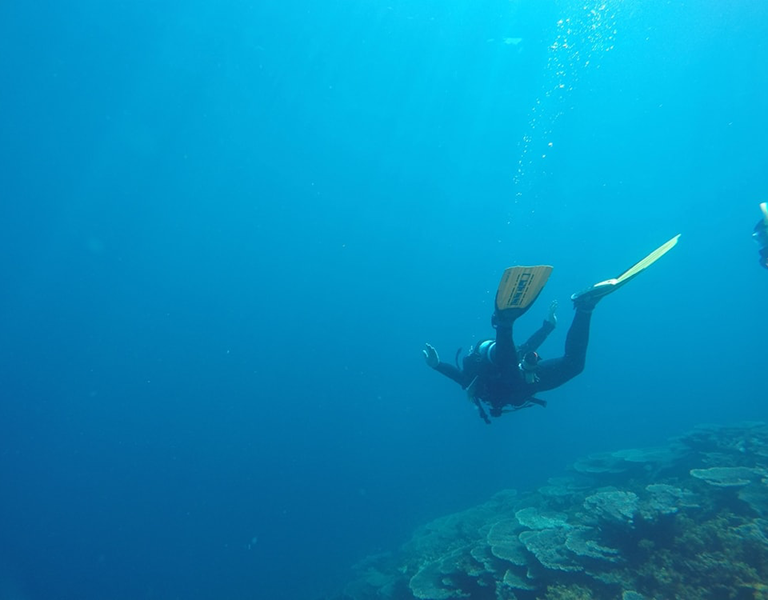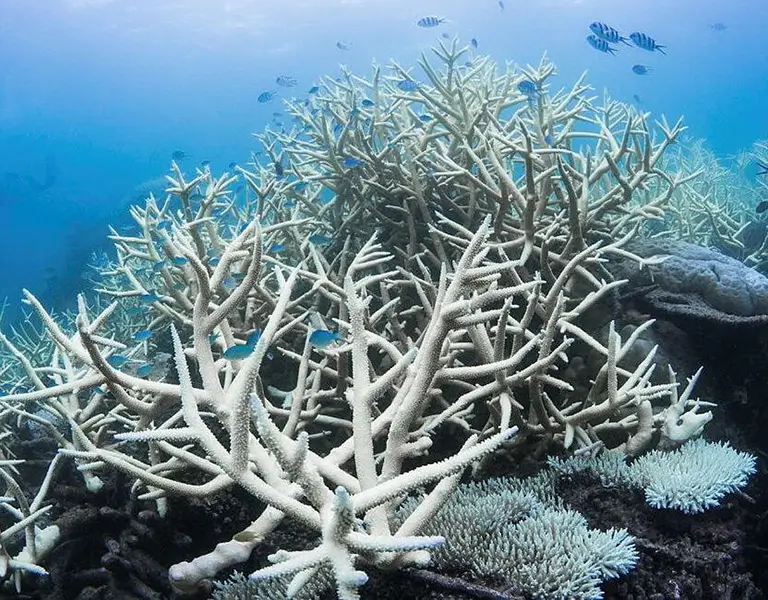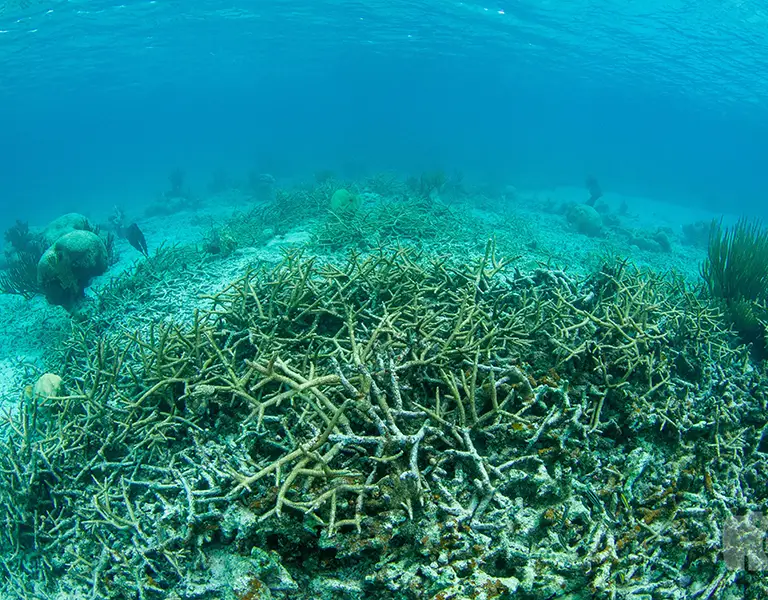Coral reefs are among the most spectacular and biologically diverse ecosystems on our planet, often described as the rainforests of the ocean. These underwater wonders begin with tiny coral polyps that, over time, create massive, intricate structures capable of supporting thousands of marine species while providing critical ecosystem services for coastal communities worldwide.
Key Takeaways
- Coral reefs are built primarily by tiny animals called coral polyps that secrete calcium carbonate skeletons, forming the reef’s structure over time.
- The three major types of coral reefs – fringing reefs, barrier reefs, and atolls – follow a formation sequence first described by Charles Darwin, often beginning around volcanic islands.
- Reef-building corals rely on a symbiotic relationship with microscopic algae called zooxanthellae, which provide nutrients through photosynthesis and give corals their vibrant colors.
- Coral reefs grow extremely slowly, typically only 0.3 to 2 centimeters per year for massive corals, making them particularly vulnerable to damage.
- Climate change, including rising sea temperatures and ocean acidification, presents significant threats to coral reef formation and survival through coral bleaching and reduced calcification rates.
How Are Coral Reefs Formed?
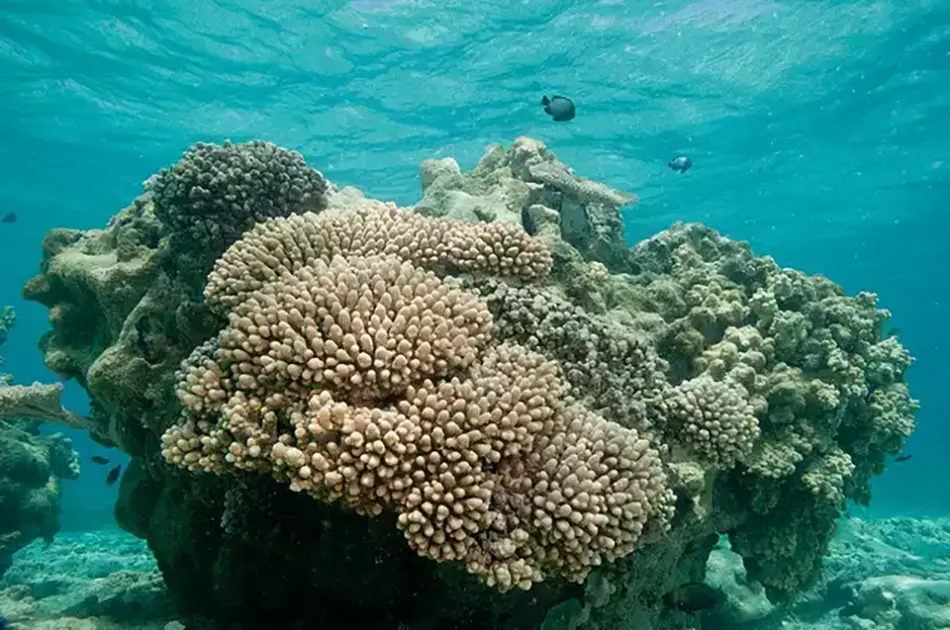
Coral reef formation is a remarkable biological and geological process that occurs over thousands of years. Unlike many structures in nature, coral reefs result from the activity of living organisms – primarily coral polyps – combined with geological processes.
The Role of Coral Polyps in Reef Formation
At the heart of coral reef formation are tiny animals called coral polyps. These small, soft-bodied organisms, related to sea anemones and jellyfish, are the true architects of coral reefs.[1] 1When free-swimming coral larvae, called planulae, find a suitable hard substrate in warm tropical waters, they attach themselves and begin to grow.
Each coral polyp secretes a calcium carbonate skeleton around its base and sides, creating a protective cup-like structure. As polyps reproduce asexually by dividing, they create identical copies of themselves, forming colonies that can contain thousands or even millions of individual polyps.[2]2
Over time, these calcium carbonate skeletons accumulate, creating the foundation upon which future generations of corals will grow. This continuous process of calcification and colony expansion is the fundamental mechanism of reef building.
The Symbiotic Relationship That Powers Reef Growth
What truly enables coral reefs to form at such impressive scales is a remarkable symbiotic relationship between coral polyps and microscopic algae called zooxanthellae. These symbiotic algae live within the tissues of coral polyps, conducting photosynthesis and sharing the resulting nutrients with their coral hosts.[3]3
This relationship provides corals with up to 90% of their energy requirements, fueling their growth and calcium carbonate production. In return, the corals provide the zooxanthellae with a protected environment and compounds needed for photosynthesis.
This symbiotic relationship is why reef-building corals are typically found in clear, shallow waters where sunlight can penetrate – the zooxanthellae need light for photosynthesis. It also explains why coral bleaching, the expulsion of these algae due to stress (often from elevated sea temperatures), can be so devastating to reef formation and health.
Coral Reef Growth: A Slow and Steady Process
Coral reefs grow extremely slowly. Massive corals may only grow 0.3 to 2 centimeters per year, while branching corals can grow faster, up to 10 centimeters annually.[4]4 This slow growth rate means that large reef structures take centuries or even millennia to form.
The growth rate of coral reefs depends on various factors:
- Water temperature: Reef-building corals thrive in waters between 23-29°C (73-84°F).
- Water clarity: Clear water allows more light to reach zooxanthellae.
- Water chemistry: Adequate calcium and carbonate concentrations are necessary for skeleton formation.
- Water movement: Moderate currents bring nutrients and oxygen while removing sediment and waste.
- Coral species: Different species of coral grow at different rates.
This slow growth makes reefs particularly vulnerable to damage, as they cannot quickly recover from destructive events like storms, ship groundings, or bleaching events.
Types of Coral Reefs and How They Form
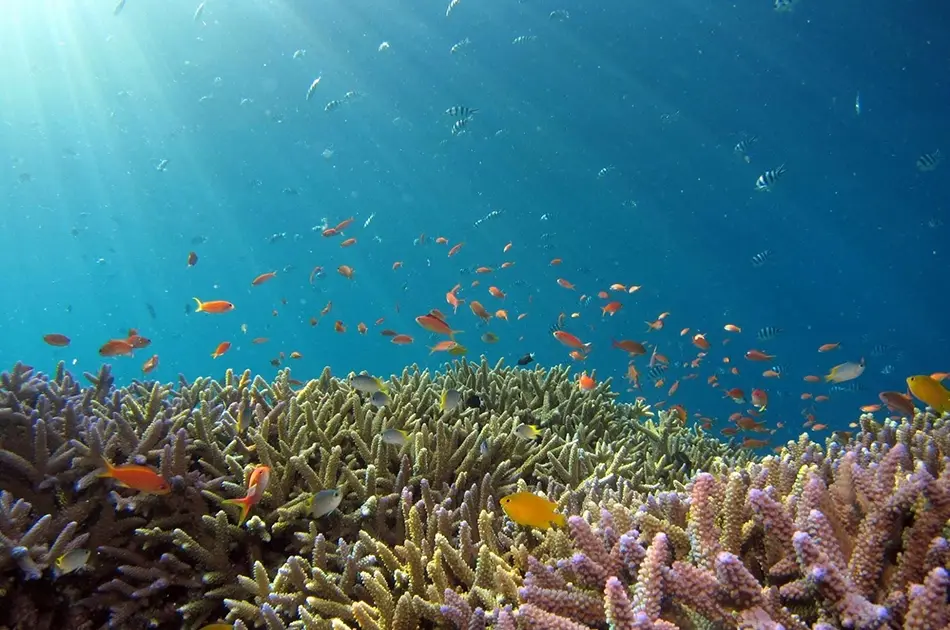
Coral reefs exist in various forms across our oceans, primarily classified into three major characteristic structures: fringing reefs, barrier reefs, and atolls. This classification, first proposed by Charles Darwin during his voyage on the HMS Beagle, also represents an evolutionary sequence in many cases.[5]5
Fringing Reefs: Where Reef Formation Begins
Fringing reefs are the most common type of coral reef and often represent the first stage in reef formation. These reefs grow directly from the shoreline of a landmass, typically a volcanic island, with little or no separation from the shore.
When new volcanic islands emerge in tropical waters, they provide ideal hard substrates for coral larvae to settle on. As corals colonize the submerged rocks and shallow waters around the island’s perimeter, they begin to form a fringing reef.
Fringing reefs typically have a reef flat (the shallow part closest to shore), a reef crest (the highest point, often exposed at low tide), and a fore reef or reef slope (the deepening section extending toward the open ocean).
Examples of well-developed fringing reefs can be found around many islands in the Pacific Ocean and the Caribbean, as well as along the northeast coast of Australia near the Great Barrier Reef.
Barrier Reefs: The Middle Stage of Reef Evolution
As a volcanic island begins to sink or subside over time (a natural geological process), the corals continue to grow upward to remain in the sunlit waters they require. This vertical growth, combined with the subsidence of the island, gradually creates a deeper channel or lagoon between the reef and the shore, forming what we call a barrier reef.
Barrier reefs run parallel to the shoreline but are separated from it by a deeper lagoon that can range from hundreds of meters to several kilometers wide. The reef crest of a barrier reef often acts as a protective barrier, reducing wave energy and creating calmer waters in the lagoon.
The most famous example is Australia’s Great Barrier Reef, the largest coral reef system in the world, stretching over 2,300 kilometers along Australia’s northeast coast. Other notable barrier reefs include the New Caledonian Barrier Reef and the Mesoamerican Reef in the Caribbean.
Atolls: The Final Stage in Reef Formation
The final stage in this evolutionary sequence occurs when the central volcanic island completely subsides beneath the sea, leaving only the ring-shaped reef and its central lagoon visible above the water. This ring-shaped coral reef structure is called an atoll.
Atoll formation follows a predictable sequence:
- Fringing reef forms around a volcanic island
- As the volcanic island subsides, the coral grows upward, forming a barrier reef
- When the island completely submerges, only the circular reef remains, surrounding a central lagoon
Atolls are typically circular or oval with a central lagoon that marks the location of the now-submerged volcanic island. They are most common in the Pacific and Indian Oceans, with famous examples including the Maldives, the Marshall Islands, and many other island groups in the South Pacific.
Other Reef Structures
While the three major reef types described above represent the classic evolutionary sequence, coral reefs can form in other ways as well:
- Patch reefs: Isolated, relatively small reef outcrops that grow up from the ocean floor, often within the lagoons of barrier reefs or atolls.
- Platform reefs: Reefs that grow on the continental shelf or other underwater plateaus rather than associated with an island.
- Bank reefs: Large, irregularly shaped reef structures that develop on shallow banks.
Each of these reef types represents different stages or variations in the coral reef formation process, but all rely on the fundamental mechanism of coral polyps secreting calcium carbonate skeletons over time.
The Role of Coral Diversity in Reef Formation
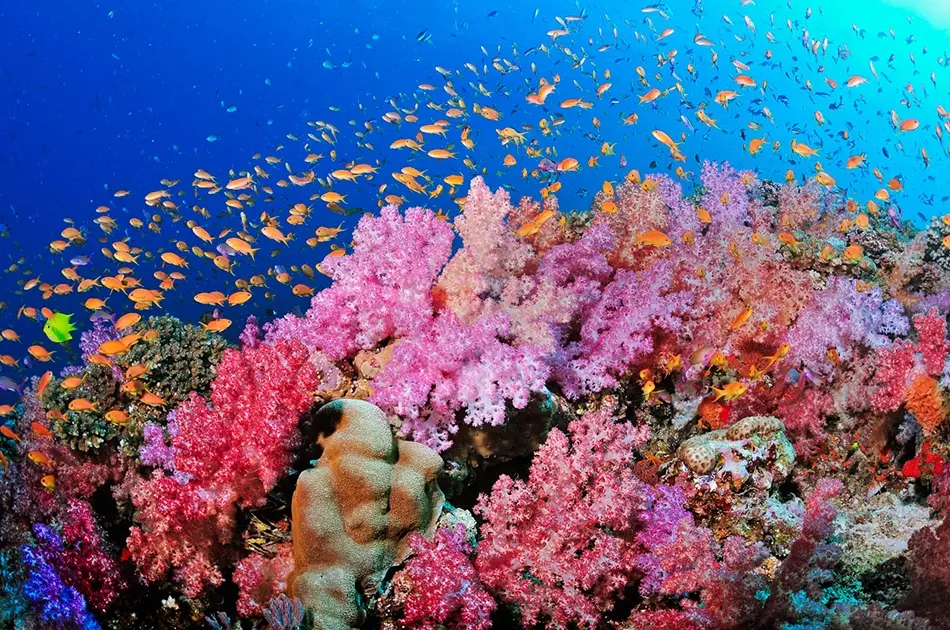
Coral reefs are built by a diverse community of organisms, with hard corals (stony corals) serving as the primary reef builders. However, a variety of coral species and other organisms contribute to reef formation and structure.
Reef Building Corals: The Master Architects
Reef building corals, primarily from the order Scleractinia (stony corals), are the main constructors of reef frameworks. These corals secrete calcium carbonate skeletons that form the structural foundation of coral reefs.[6]6
Different coral species create different reef structures:
- Massive corals like brain corals and boulder corals create solid, dome-shaped structures
- Branching corals such as staghorn and elkhorn corals form complex, branch-like structures
- Table corals create wide, flat platforms
- Plate corals form thin, horizontal sheets
This diversity of growth forms creates the complex three-dimensional architecture that makes coral reefs such rich habitats. The varied structures provide countless niches for marine life, from tiny crevices for small fish to hide from predators to open branches where filter feeders can access passing currents.
The Supporting Cast: Other Reef-Building Organisms
While hard corals are the stars of reef building, they aren’t the only contributors to reef formation:
- Coralline algae: These red algae secrete calcium carbonate and help cement coral fragments together, strengthening the reef structure.
- Soft corals: Though they don’t contribute significantly to the reef’s calcium carbonate structure, soft corals like sea fans and sea whips add to the reef’s biodiversity and complexity.
- Sponges: Many species of sponges bore into and erode coral skeletons, creating spaces for other organisms while also contributing to sand formation.
- Mollusks and foraminifera: The calcium carbonate shells and tests of these organisms add to reef sediments and structure.
Together, these organisms create a dynamic ecosystem where constructive processes (calcification) and destructive processes (bioerosion) exist in balance, shaping the reef’s physical structure over time.
How Corals Reproduce to Expand Reefs
Corals reproduce through both asexual and sexual methods, each playing a role in reef formation and expansion:
Asexual reproduction occurs when:
- A coral colony produces identical copies of its polyps through budding
- Fragments break off from a colony and establish themselves elsewhere
- A process called polyp bailout occurs, where individual polyps separate from their colony to escape stress
Sexual reproduction happens when:
- Corals release eggs and sperm into the water during mass spawning events
- These gametes form larvae (planulae) that can drift with currents
- The larvae eventually settle on suitable substrates and form new colonies
Sexual reproduction is crucial for maintaining genetic diversity and allowing corals to colonize new areas, potentially forming new reefs. Mass spawning events, where multiple coral species release their gametes simultaneously (often triggered by lunar cycles and water temperature), are one of the ocean’s most spectacular phenomena.
Through these reproductive strategies, corals continually expand existing reefs and establish new ones when conditions are favorable, driving the ongoing process of reef formation.
The Geological Timeframe of Reef Formation
Coral reef formation is a process that unfolds over geological timescales, with large reef structures representing the accumulation of countless generations of coral growth.
How Long Does It Take for a Coral Reef to Form?
The formation of a full-fledged coral reef system is measured not in years or decades, but in centuries and millennia. A small patch reef might begin to form within a few decades, but barrier reefs and atolls represent thousands of years of continuous coral growth and adaptation.[7]7
For example:
- The Great Barrier Reef in its current form is estimated to be between 6,000 and 8,000 years old
- Many Pacific atolls began forming over 50 million years ago, with their current structures developing over the past 10,000 years since the last ice age
- Fringing reefs can begin to show significant development within 100-200 years if conditions are favorable
The incredibly slow pace of reef formation highlights why conservation is so crucial – what takes nature thousands of years to build can be damaged or destroyed in just minutes or hours through destructive practices.
The Role of Sea Level Changes in Reef Formation
Sea level changes have played a critical role in coral reef formation throughout Earth’s history. During ice ages, when sea levels were lower, many of today’s reefs were actually exposed land. As ice sheets melted and sea levels rose, corals colonized newly submerged areas.
This pattern of sea level changes has created:
- Drowned reefs: Former reef structures now too deep for active coral growth
- Raised reefs: Ancient reef structures now found above sea level due to either sea level drops or geological uplift
- Modern reef sequences: Layers of coral growth that track historical sea level changes
These various reef formations provide valuable records of Earth’s climate history. By studying ancient reef structures, scientists can better understand past climate conditions and sea level changes, which helps inform predictions about how current climate change may affect reef formation in the future.
Threats to Coral Reef Formation
While coral reefs have persisted for millions of years, adapting to gradual environmental changes, they now face unprecedented threats that directly impact the reef formation process.
Coral Bleaching: A Major Disruptor of Reef Formation
Coral bleaching occurs when corals expel their symbiotic zooxanthellae due to stress, most commonly from elevated sea temperatures. Without these algae, corals lose their primary source of nutrition and their vibrant colors, appearing white or “bleached.”[8]8
Bleaching directly disrupts reef formation because:
- Energy normally used for growth and calcium carbonate production is redirected to survival
- Weakened corals are more susceptible to disease and mortality
- Mass bleaching events can kill large portions of a reef, setting back the reef formation process by decades
Global mass bleaching events have become increasingly common, with major events occurring in 1998, 2010, 2015-2017, and 2020. After severe bleaching, it can take 10-15 years for a reef to begin recovering—if conditions remain favorable.
Ocean Acidification: Changing the Chemistry of Reef Building
As atmospheric CO₂ levels rise, approximately 30% of this excess carbon dioxide is absorbed by the ocean, causing chemical reactions that lower seawater pH—a process known as ocean acidification.[9]9
This changing ocean chemistry interferes with reef formation by:
- Making it more difficult for corals to extract the calcium carbonate they need to build their skeletons
- Potentially dissolving existing calcium carbonate structures
- Forcing corals to expend more energy on skeleton building, leaving less for other vital functions
Studies suggest that by the end of this century, if current emission trends continue, ocean acidification could reduce coral calcification rates by up to 50%, drastically slowing the reef formation process.
Human Impacts on Reef Formation Processes
Beyond climate change, direct human activities significantly impact reef formation:
- Overfishing: Removing key herbivorous fish species can lead to algal overgrowth that prevents coral larvae from settling and establishing new colonies.
- Sedimentation: Coastal development and poor land management increase sediment runoff, which can smother corals and block essential sunlight.
- Pollution: Agricultural runoff, sewage, and industrial pollution can inhibit coral growth and reproduction.
- Physical damage: Destructive fishing practices, anchoring, and tourism impacts physically break reef structures that took centuries to form.
These localized threats create additional stress for coral reefs already struggling with global climate impacts, further compromising their ability to grow and maintain their structures.
How Healthy Reefs Continue to Form and Grow
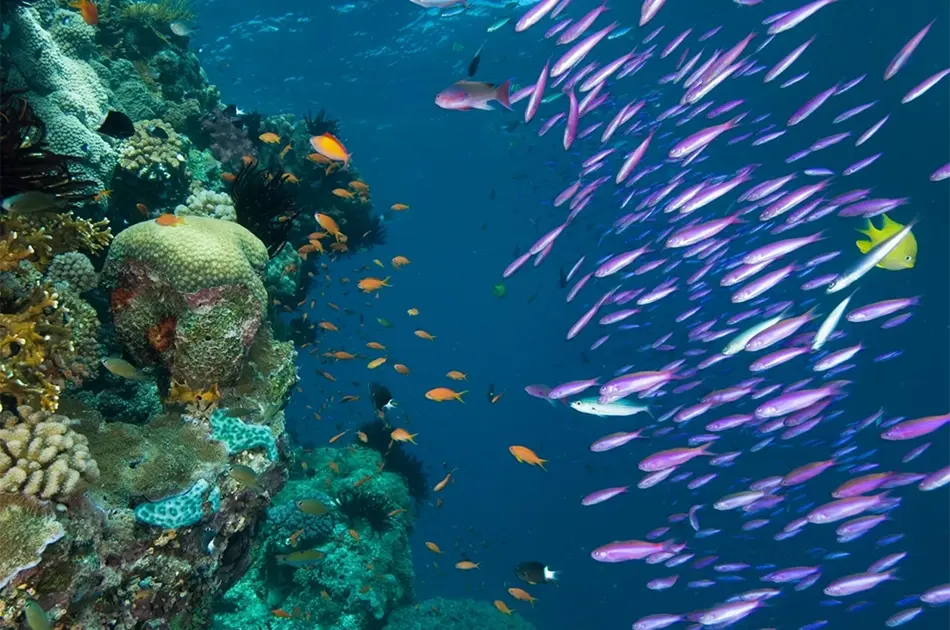
Despite the challenges they face, healthy coral reef ecosystems continue to form and grow through remarkable resilience mechanisms and beneficial ecological relationships.
The Resilience of Coral Reef Ecosystems
Coral reefs have evolved numerous strategies to persist through changing conditions:
- Genetic diversity: High genetic variation within coral species allows for natural selection of resilient traits.
- Ecological redundancy: Multiple species performing similar functions provide insurance against the loss of any single species.
- Adaptation capacity: Some corals can adapt to higher temperatures or host different zooxanthellae strains better suited to changing conditions.
- Recovery mechanisms: Reefs with good connectivity to other reef systems can be repopulated by coral larvae following disturbances.
These natural resilience mechanisms have allowed coral reefs to persist through significant environmental changes throughout Earth’s history. However, the unprecedented rate of current climate change and direct human impacts test these mechanisms like never before.
The Role of Other Marine Species in Supporting Reef Formation
Reef formation is supported by a complex web of ecological relationships:
- Herbivorous fish (like parrotfish and surgeonfish) clear space for new coral settlement by controlling algal growth. They also contribute to sand formation through their feeding activities.
- Sea urchins similarly help control algae and create space for coral recruitment.
- Cleaning species remove parasites and dead tissue from corals, helping maintain colony health.
- Predatory fish keep populations of coral-eating organisms (like some snails and starfish) in check.
These relationships highlight why protecting not just corals but entire reef ecosystems is essential for continued reef formation. The loss of key species can trigger ecological cascades that ultimately impact the reef-building process.
Conservation and Restoration of Coral Reef Formation
As we better understand the complex processes behind coral reef formation, we can develop more effective conservation and restoration strategies to ensure these ecosystems continue to form and thrive.
Modern Approaches to Supporting Natural Reef Formation
Conservation efforts increasingly focus on removing stressors that inhibit natural reef formation processes:
- Marine Protected Areas (MPAs): Well-designed and enforced MPAs reduce fishing pressure and other direct impacts, allowing natural reef formation processes to continue undisturbed.
- Watershed management: Reducing sedimentation and pollution from land sources improves water quality for coral growth.
- Sustainable tourism practices: Education and regulations for tourism activities minimize physical damage to forming reef structures.
- Climate action: Ultimately, addressing the root causes of climate change is essential for maintaining the oceanic conditions needed for reef formation.
These approaches aim to maintain the conditions where coral reefs can continue their natural formation processes, recognizing that natural reef growth is preferable to artificial intervention whenever possible.
The Science of Coral Reef Restoration
When reefs have been significantly damaged, restoration techniques can help kick-start the reef formation process:
- Coral gardening: Growing coral fragments in underwater nurseries before transplanting them to degraded reef areas.
- Larval enhancement: Collecting coral spawn, rearing larvae in controlled conditions, and seeding them onto degraded reefs.
- Artificial reef structures: Providing stable substrates for natural coral settlement in areas where the reef framework has been destroyed.
- Assisted evolution: Selectively breeding or conditioning corals for greater resilience to stressors like higher temperatures.
These methods can’t replace natural reef formation processes but can help accelerate recovery in damaged areas. The most successful restoration efforts combine these techniques with strong protection measures that allow restored corals to thrive and continue the reef-building process naturally.
Conclusion
The formation of coral reefs represents one of nature’s most extraordinary collaborative processes – tiny coral polyps creating massive, complex structures that support incredible biodiversity and provide vital ecosystem services. From the biology of coral polyps and their symbiotic relationships to the geological processes that shape different reef types, coral reef formation involves intricate interactions between living organisms and their environment over vast timeframes.
Today, these ancient processes face unprecedented challenges from climate change and direct human impacts. Rising sea temperatures cause coral bleaching, ocean acidification makes skeleton formation more difficult, and various human activities damage and disrupt reef structures that took centuries or millennia to form.
Understanding how coral reefs form is essential not just for appreciating these underwater wonders, but for developing effective conservation and restoration strategies. By protecting the conditions that enable natural reef formation and supporting innovative restoration approaches where needed, we can help ensure that coral reefs continue to form, grow, and thrive for generations to come.
The story of coral reef formation reminds us of the remarkable adaptability of life on our planet and the delicate balance of conditions needed to sustain it. As we face a future of environmental change, this understanding becomes more valuable than ever in our efforts to protect and restore these irreplaceable ecosystems.
About Coral Vita
Coral Vita is a mission-driven company dedicated to restoring our world’s dying and damaged reefs. Using innovative land-based farming techniques, Coral Vita grows diverse and resilient corals in months instead of the decades they take in nature. These corals are then transplanted into threatened reefs, helping to preserve ocean biodiversity while protecting coastal communities that depend on healthy reefs for protection, food, and income.
Founded by environmental entrepreneurs Sam Teicher and Gator Halpern, Coral Vita’s high-tech coral farms incorporate breakthrough methods to restore reefs in the most effective way possible. In 2021, the company was recognized as the inaugural winner of Prince’s William’s Revive Our Oceans Earthshot Prize Winner for their pioneering work in coral restoration.
To learn more about Coral Vita’s work or to get involved in coral reef conservation efforts, visit their website at www.coralvita.co or contact them directly through their Contact Us page.
Frequently Asked Questions
How are coral reefs formed naturally?
Coral reefs form when free-swimming coral larvae attach to submerged rocks or other hard surfaces along the edges of islands or continents, after which coral polyps secrete skeletons of calcium carbonate (limestone). As these colonies grow and expand, they develop into one of three characteristic structures—fringing reefs, barrier reefs, or atolls—with large reef structures taking thousands of years to form due to slow growth rates of only 0.3-2 centimeters per year.
What are the three stages of coral reef formation?
The three stages of coral reef formation, first described by Charles Darwin, are fringing reefs (growing directly from shorelines), barrier reefs (forming as islands sink, creating lagoons), and atolls (circular reefs remaining after islands completely subside). This evolutionary sequence typically unfolds over thousands to millions of years as geological processes work in concert with continuous coral growth.
What conditions do coral reefs need to form?
Coral reefs require warm tropical waters (23-29°C), clear shallow water for sunlight penetration, good water quality with low sedimentation, and adequate calcium carbonate for skeleton formation. These specific conditions explain why reefs primarily develop in tropical and subtropical ocean regions between 30°N and 30°S latitude.
How long does it take for a coral reef to form?
Coral reef formation is an extremely slow process with small patch reefs showing development within decades, while larger structures require centuries or millennia of continuous coral growth. The Great Barrier Reef is estimated to be between 6,000-8,000 years old in its current form, though its foundations are much older.
References
- National Oceanic and Atmospheric Administration. (2023). “What is a Coral Reef?” NOAA’s National Ocean Service. https://oceanservice.noaa.gov/facts/coral.html ↩︎
- Barnes, R.D. (1987). Invertebrate Zoology. Fifth Edition. Saunders College Publishing. https://www.worldcat.org/title/invertebrate-zoology/oclc/13822410 ↩︎
- Muscatine, L., & Porter, J.W. (1977). “Reef Corals: Mutualistic Symbioses Adapted to Nutrient-Poor Environments.” BioScience, 27(7), 454-460.
https://academic.oup.com/bioscience/article-abstract/27/7/454/250294 ↩︎ - Buddemeier, R.W., & Kinzie, R.A. (1976). “Coral Growth.” Oceanography and Marine Biology Annual Review, 14, 183-225. https://www.researchgate.net/publication/284099855_Coral_growth ↩︎
- Darwin, C. (1842). The Structure and Distribution of Coral Reefs. Smith, Elder and Co., London. https://darwin-online.org.uk/content/frameset?itemID=F271&viewtype=text&pageseq=1 ↩︎
- Veron, J.E.N. (2000). Corals of the World. Australian Institute of Marine Science, Townsville. https://coral.aims.gov.au/ ↩︎
- Hubbard, D.K. (2015). “Reef Biology and Geology – Not Just a Matter of Scale.” In Coral Reefs in the Anthropocene, C. Birkeland (Ed.), Springer. https://link.springer.com/chapter/10.1007/978-94-017-7249-5_3 ↩︎
- Hughes, T.P., Kerry, J.T., Álvarez-Noriega, M., et al. (2017). “Global Warming and Recurrent Mass Bleaching of Corals.” Nature, 543(7645), 373-377. https://www.nature.com/articles/nature21707 ↩︎
- Hoegh-Guldberg, O., Mumby, P.J., Hooten, A.J., et al. (2007). “Coral Reefs Under Rapid Climate Change and Ocean Acidification.” Science, 318(5857), 1737-1742. https://www.science.org/doi/10.1126/science.1152509 ↩︎
